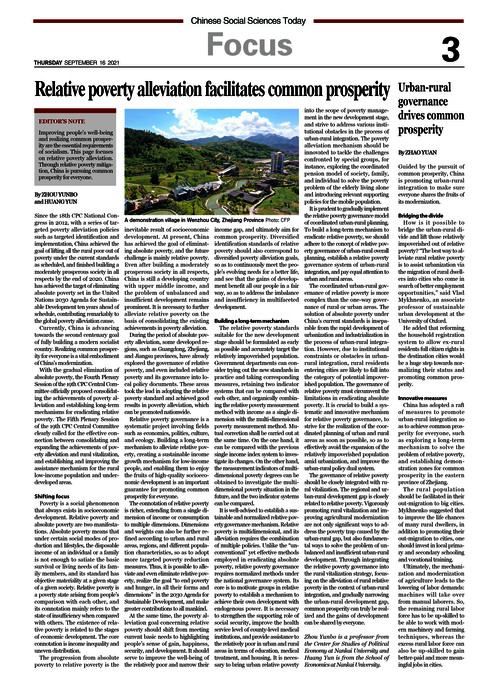Urban-rural governance drives common prosperity
2021-09-16 14:14:52
By ZHAO YUAN
Guided by the pursuit of common prosperity, China is promoting urban-rural integration to make sure everyone shares the fruits of its modernization.
Bridging the divide
How is it possible to bridge the urban-rural divide and lift those relatively impoverished out of relative poverty? “The best way to alleviate rural relative poverty is to assist urbanization via the migration of rural dwellers into cities who come in search of better employment opportunities,” said Vlad Mykhnenko, an associate professor of sustainable urban development at the University of Oxford.
He added that reforming the household registration system to allow ex-rural residents full citizen rights in the destination cities would be a huge step towards normalizing their status and promoting common prosperity.
Innovative measures
China has adopted a raft of measures to promote urban-rural integration so as to achieve common prosperity for everyone, such as exploring a long-term mechanism to solve the problem of relative poverty, and establishing demonstration zones for common prosperity in the eastern province of Zhejiang.
The rural population should be facilitated in their out-migration to big cities. Mykhnenko suggested that to improve the life chances of many rural dwellers, in addition to promoting their out-migration to cities, one should invest in local primary and secondary schooling and vocational training.
Ultimately, the mechanization and modernization of agriculture leads to the lowering of labor demands: machines will take over from manual laborers. So, the remaining rural labor force has to be up-skilled to be able to work with modern machinery and farming techniques, whereas the excess rural labor force can also be up-skilled to gain better-paid and more meaningful jobs in cities.



